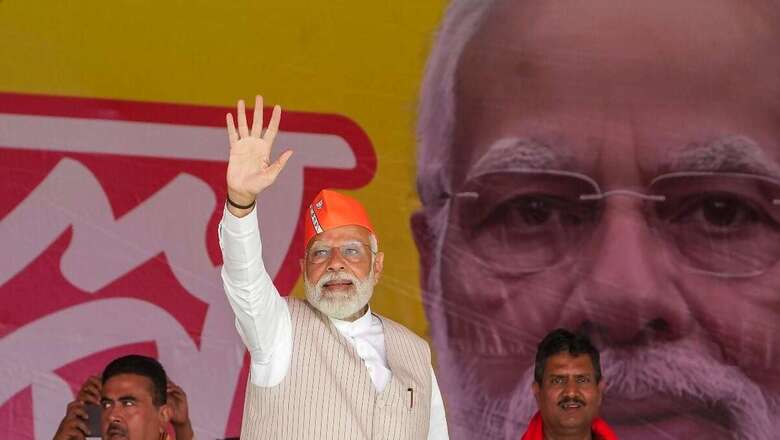
views
Modinomics is imbued with the ethos of ‘Ek Bharat Shreshtha Bharat’ and is a testimony to India’s civilisation and cultural diversity. It also resonates with the resolve to respect our democratic and parliamentary traditions. Moreover, it embodies the commitment to forge new traditions for the new India of the 21st century. At the core of Modinomics are policies that will shape the development of ‘Viksit Bharat’ in the Amrit Kaal that PM Modi so passionately espouses at every available opportunity.
This year is also the 75th year of the adoption of our Constitution and in the true spirit of nationalism, Amrit Kalash containing soil from every village of the country was brought to Delhi under the ‘Meri Maati, Mera Desh’ campaign, thanks to the Modi government. Over 2 lakh plaques were installed. More than 3 crore people took the oath of the ‘Panch Pran’. More than 70,000 Amrit Sarovars were built. Construction of more than 2 lakh “Amrit Vatikas” was completed. Over 2 crore trees were planted. More than 16 crore people uploaded their selfies with the Tricolour. It is because of India’s role as ‘Vishwa Mitra’ that we have become the voice of the Global South today.
No prime minister before Narendra Modi made economics not only about good governance but equally about establishing a connect with India’s deep-rooted spiritual and cultural legacy. After waiting for centuries, Ram Lalla has now been enshrined in his grand temple in Ayodhya. It was during the Amrit Mahotsav that a statue of Netaji Subhash Chandra Bose was installed on “Kartavya Path”. A museum dedicated to all the prime ministers of the country was inaugurated in Delhi, Shantiniketan and Hoysala Temple were included in the world heritage list, Veer Bal Diwas was declared in the memory of the two “chote sahibzaades”, birth anniversary of Birsa Munda was declared as “Janjatiya Gaurav Diwas” and August 14 was declared as “Vibhajan Vibhishika Smriti Diwas” to commemorate the horrors of partition, among the many other measures to celebrate the rise of Bharat by the Modi government.
The past year has been full of historic achievements for India. Amidst serious global crises, India emerged as the fastest-growing major economy, consistently maintaining a growth rate of over 7 per cent for 3 years in a row and in fact, growing at 9.1 per cent in FY22. India became the first country to hoist its flag on the southern pole of the Moon and successfully launched the Aditya Mission; our satellite reached a distance of 15 lakh kilometres away from the Earth. The success of the historic G20 Summit strengthened India’s global standing.
India won more than 100 medals for the first time in Asian Games. It also won more than 100 medals in the Para Asian Games. India got its largest sea bridge, the Atal Setu, the first Namo Bharat train and the first Amrit Bharat train. India became the country with the fastest 5G rollout in the world. An Indian airline company executed the world’s largest aircraft deal last year. And all this happened under the aegis of one man – Prime Minister Narendra Modi and his tireless zeal. From Sudarshan Setu to the Chenab bridge, Modi’s boost to infra is commendable.
Over the past 12 months, several important legislations that lay a strong foundation for the realisation of the vision of ‘Viksit Bharat’ were introduced and enacted. The Nari Shakti Vandan Adhiniyam after a wait of three decades became a pleasant reality. This has paved the way for ensuring greater participation of women in the Lok Sabha and the legislative assemblies. This strengthens the Modi government’s resolve for women-led development. Additionally, the criminal justice system rooted in the era of slavery is now history. Now, justice takes precedence over punishment. The nation has got a new Nyaya Sanhita based on the principle of ‘Justice First’. The Digital Personal Data Protection Act will make the digital space more secure. “Anusandhan National Research Foundation Act” will strengthen research and innovation in the country. The Jammu and Kashmir Reservation Act will ensure the right to representation to tribals there. During the last 10 years under PM Modi, the Central University Act was amended. This paved the way for setting up a Sammakka Sarakka Central Tribal University in Telangana. Last year alone, 76 old laws were repealed.
Any nation can progress at a fast pace only when it overcomes past challenges and invests maximum energy in the future. Over the past 10 years, India has witnessed several such tasks being accomplished in the national interest. For instance, the aspiration to construct the “bhavya” Ram Mandir is a reality. There were doubts regarding the removal of Article 370 from Jammu and Kashmir. Those are now history and the abrogation of Article 370 has paved the way for “Naya Kashmir”, thanks to Modi’s farsightedness. Again, it is the Modi government which enacted a strict law against instant ‘Triple Talaq’, making it a criminal offence.
The government also enacted a law to grant citizenship to persecuted minorities from our neighbouring countries (CAA). It implemented One Rank One Pension (OROP) which was awaited for four decades. After the implementation of OROP, the ex-servicemen have by now received approximately Rs 1 lakh crore and more. For the first time, a Chief of Defence Staff (CDS) has been appointed for India’s defence forces.
Since forever, we have been hearing the slogan of ‘Garibi Hatao’. Now, for the first time in our lives, we are witnessing the eradication of poverty on a massive scale. According to NITI Aayog, in the last one decade of the Modi government, about 25 crore countrymen have been lifted out of multi-dimensional poverty. This is something that instills great confidence in PM Modi’s concept of a welfare state, which has uprooted middlemen and ensured last-mile delivery, sans any leakages. In the last 10 years, we have seen India transform from a “fragile five” to a “top five” economy, with our exports having increased from about $450 billion to more than $775 billion. FDI flows have doubled to almost $597 billion.
A decade ago, there were only a few hundred startups in the country, which have now grown to more than 1.17 lakh today. 94,000 companies were registered in a year, with the number rising to 1.6 lakh in the last one year. In December 2017, 98 lakh people used to pay GST, today that number is over 1.4 crore. Around 13 crore vehicles were sold in the 10 years before 2014. In the last 10 years alone, Indians have purchased more than 21 crore vehicles. About 2000 electric vehicles were sold in 2014-15. Whereas, till the month of December for the year 2023-24 (FY24), about 12 lakh electric vehicles have been sold.
In the last decade, PM Modi has made good governance and transparency the main foundations of every institution. As a result of this, we have witnessed major economic reforms. During this period, the Insolvency and Bankruptcy Code (IBC) was enacted in the country. The country now has ‘One Nation One Tax’ in the form of GST. In the last 10 years, CapEx has increased 5 times to Rs 10 lakh crore. Fiscal deficit is also under control, despite two Black Swan events, namely the Covid pandemic and the Ukraine-Russia conflict.
Today, we have forex reserves in excess of $617 billion, 4th highest globally. Our financial system, which was in very bad shape earlier under a thoroughly corrupt Congress, has today become one of the strongest in the world, with not a single institution collapsing last year. China on the other hand, saw Evergrande collapsing, Europe saw Credit Suisse shutting down, while the US saw Signature Bank and Silicon Valley Bank crumbling. NPAs of banks which used to be in excess of 12 per cent under the erstwhile Congress regime are today only 4 per cent or lower. Make in India and Atmanirbhar Bharat campaigns have become our strength. Today, India is the world’s second-largest producer of mobile phones. During the last decade, there has been a five-fold increase in mobile phone manufacturing, thanks to PM Modi’s Production Linked Incentive (PLI) scheme, among other reasons. A few years ago, India used to import toys, but today India is exporting Made in India toys. India’s defence production has crossed Rs 1 lakh crore.
Today, be it the country’s indigenous aircraft carrier INS Vikrant, the combat aircraft Tejas which is becoming the strength of our air force, the manufacturing of C-295 transport aircraft which is going to take place in India, or the defence corridors that are being developed in Uttar Pradesh and Tamil Nadu, the Modi government has ensured participation of the private sector in the defence sector, without compromising national interest. Opening up the space sector for young startups is yet another trailblazer by the Modi government. There has been consistent improvement in Ease of Doing Business (EoDB) rankings. More than 40,000 compliances have been removed or simplified in the last few years.
Our MSME sector with over 6.1 crore MSMEs is also benefiting enormously from reforms. The definition of MSMEs has been expanded. Investment and turnover have been added to the new definition. Presently, approximately 3.5 crore MSMEs are registered on the Udyam and Udyam Assist Portal. Under the Credit Guarantee Scheme for MSMEs, guarantees of nearly Rs 5 lakh crore have been sanctioned in the last few years. This is over six times higher than the amount provided in the preceding decade before 2014. Another significant reform of the Modi government is the creation of Digital India. Today, the whole world acknowledges India’s digital prowess, with over Rs 18 lakh crore worth of transactions done every single month, on average. Even in villages, routine buying and selling is being done digitally. Today, 46 per cent of the world’s total real-time digital transactions take place in India and the credit undoubtedly goes to the conviction of Prime Minister Modi. A record 1200 crore digital transactions are done through UPI every month.
Digital India has made banking more convenient and the disbursement of loans easier. The trinity of Jan Dhan Aadhaar Mobile (JAM) has helped curb corruption. Modi government has so far transferred Rs 34 lakh crore through DBT. Thanks to JAM, about 10 crore fake beneficiaries have been weeded out from the system. This has helped prevent Rs 2.75 lakh crore from going into the wrong hands. Digital Health IDs of around 53 crore people have been created under Ayushman Bharat health account.
Along with digital, there has been record investment in physical infrastructure. Today, infrastructure is being built in India, the kind of which every Indian used to only dream about earlier. In the last 10 years, under PM Modi’s aegis, nearly 3.75 lakh kilometres of new roads have been built in the villages. The length of national highways has increased from 90,000 kilometres to 1.46 lakh kilometres. The length of 4-lane national highways has increased 2.5 times. The length of the high-speed corridor was 500 kilometres earlier and is now 4000 kilometres. The number of airports has doubled from 74 to 149. Cargo handling capacity at major ports of the country has doubled. Nearly 2 lakh village panchayats of the country have been connected with optical fibre. More than 4 lakh common service centres (CSCs) have been opened in villages. These have become a major source of employment.
‘One Nation-One Grid-One Frequency’ has improved power transmission in the country. It is boosting the gas-based economy. The metro facility, limited to only 5 cities, is now in 20 cities. More than 25 thousand kilometres of railway tracks were laid. This is more than the total length of railway tracks in many developed countries. India is very close to 100 per cent electrification of railways. During this period, semi-high-speed trains were started for the first time in India. Today, Vande Bharat trains are running on more than 39 routes. More than 1300 railway stations are being transformed under the Amrit Bharat station scheme.
PM Modi is erecting the grand edifice of a ‘Viksit Bharat’ on four strong pillars namely, youth power, women power, farmers and the poor. The Modi government has spent a significant portion of tax revenues to empower these pillars. Over 4.1 crore poor families have got their own pucca houses. About Rs 6 lakh crore has been spent on this initiative. For the first time, piped water has reached over 11 crore rural families. Around Rs 4 lakh crore is being spent on this. Over 10 crore Ujjwala gas connections have by now been provided. The Modi government has spent around Rs 2.5 lakh crore on this scheme.
Since the outbreak of the pandemic, 80 crore countrymen have been given free ration. This facility has now been extended for another 5 years. An additional Rs 11 lakh crore would be spent on this. The Modi government’s endeavour is to ensure speedy saturation under every welfare scheme. No eligible person should remain deprived. With this objective, the Viksit Bharat Sankalp Yatra has been underway since November 15, 2023. So far, around 19 crore citizens have participated in this yatra.
In the last few years, the world has witnessed two major wars and faced a global pandemic. Despite such global crises, the average inflation rate has been maintained at 5 per cent in the last decade. In the 10 years prior to 2014, the average inflation rate was over 8.6 per cent. Earlier, Income Tax in India was levied on income of Rs 2 lakh and above. Today in India, there is no tax on income up to Rs 7 lakh. Due to tax exemptions and reforms, Indian taxpayers have saved about Rs 2.5 lakh crore in the last 10 years. In addition to the Ayushman Bharat scheme, the Central government is also providing free treatment in various hospitals. This has helped the country’s citizens save nearly Rs 3.5 lakh crore. Jan Aushadhi Kendras have helped the poor save about Rs 28,000 crore on the purchase of medicines.
Prices of coronary stents, knee implants and cancer medicines have also been reduced. The Modi government is also running a programme to provide free dialysis to kidney patients. More than 21 lakh patients are availing of this facility every year. This has helped patients save Rs 1 lakh every year.
Railways give about 50 per cent discount on every passenger travelling by Indian Railways. Due to this, poor and middle-class passengers save Rs 60,000 crore every year. The poor and middle class are getting air tickets at lower prices. Under the UDAN scheme, the poor and middle class has saved more than Rs 3000 crore on air tickets alone. Thanks to the LED bulb scheme, there has been a saving of over Rs 20,000 crore in electricity bills. Under Jeevan Jyoti Bima Yojana and Suraksha Bima Yojana, poor people have received over Rs 16,000 crore in claims.
Speaking of women empowerment, the Modi government has enlarged the role of daughters everywhere – in water, land, sky and space. Today about 10 crore women are associated with Self-help groups (SHGs). Bank loans worth Rs 8 lakh crore and financial assistance worth Rs 40,000 crore have been disbursed to these groups. The government is implementing a campaign to make two crore women ‘Lakhpati Didis’. 15,000 drones are being provided to groups under the NAMO Drone Didi scheme. Increasing maternity leave from 12 weeks to 26 weeks has greatly benefited lakhs of women in the country. The government has granted permanent commission to women for the first time in the Armed Forces. Also, for the first time, women cadets have been given admission in Sainik Schools and National Defence Academy. Today, women are also fighter pilots and are also commanding naval ships for the first time and this is due to the foresight and vision of Prime Minister Modi.
Out of more than 46 crore loans extended under Mudra Yojana, more than 31 crore loans have been given to women alone. Crores of women have become self-employed by availing of benefits under this scheme.
Speaking of farming, the Modi government is doing all it should to make farming more profitable. Under the PM-Kisan Samman Nidhi scheme, farmers have received over Rs 2.8 lakh crore so far. Over the past 10 years, there has been a threefold increase in easy loans for farmers from banks. Under the Pradhan Mantri Fasal Bima Yojana, farmers paid a premium of Rs 30,000 crore. In return, they have received claims worth Rs 1.5 lakh crore. In the last 10 years, farmers have received nearly Rs 18 lakh crore as MSP (Minimum Support Price) for paddy and wheat crops. This is 2.5 times more than the preceding 10 years before 2014.
Previously, the government procurement of oilseeds and pulses under the Congress regime was negligible. In the last decade however, under PM Modi, farmers producing oilseeds and pulses have received over Rs 1.25 lakh crore as MSP. Thanks to the agricultural export policy in the country, for the first time, agricultural exports reached Rs 4 lakh crore. So far, around 8,000 farmer producer organisations (FPOs) have also been formed. To promote cooperatives in agriculture, a Ministry of Cooperation has been established in the country. The world’s largest grain storage plan has been launched in the cooperative sector. In villages where there are no cooperative societies, two lakh societies are being established on a war footing.
Schemes worth more than Rs 38,000 crore are being implemented in the fisheries sector, due to which fish production has increased from 95 lakh metric tonnes to 175 lakh metric tonnes i.e. almost doubled in the last ten years. Inland fisheries production has increased from 61 lakh metric tonnes to 131 lakh metric tonnes. Exports in the fisheries sector have more than doubled from Rs 30,000 crore to Rs 64,000 crore. For the first time in the country, livestock farmers and fishermen have been given the benefit of Kisan Credit Cards (KCCs).
To be continued
Sanju Verma is an Economist, National Spokesperson of the BJP and the Bestselling Author of ‘The Modi Gambit’. Views expressed in the above piece are personal and solely those of the writer. They do not necessarily reflect News18’s views.










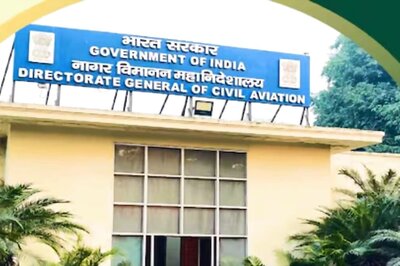

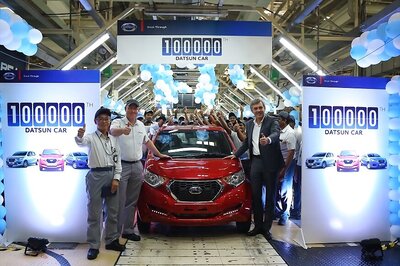


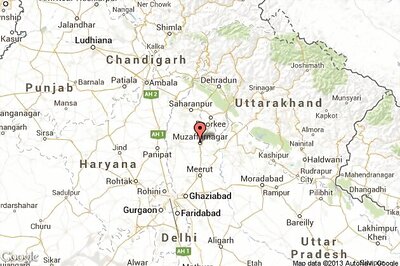

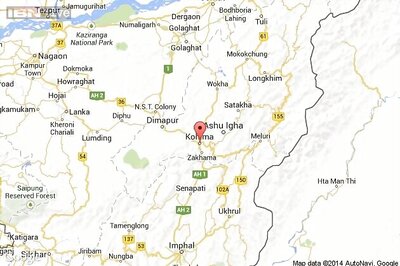

Comments
0 comment